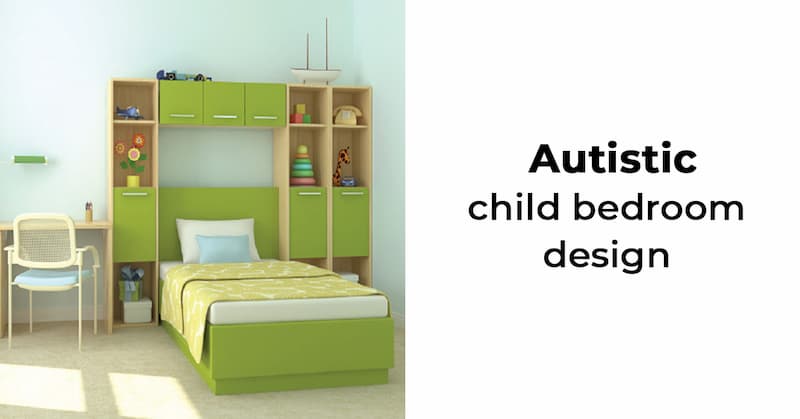Tips for Autism-Friendly Bedroom Design
Let’s face it: autistic children are prone to facing difficulties with getting a good night’s sleep. This can be quite a challenge for parents and caregivers, but that doesn’t mean we’re completely powerless against it.
Designing a bedroom that works well for children with autism can help ensure they’re getting the quality and quantity of sleep that they need. Every child is different, but a universal principle applies: designing their bedroom so that it can serve as a refuge against sensory overload will be of massive help. That said, here are five helpful tips for autism-friendly bedroom design.
The right lighting
Children with autism can be sensitive to light and textures. Thankfully, there’re a few design ideas that you can execute to adjust light intensity and tone down harshness. You can add blackout shades or curtains and low-pile rugs to reduce glare. Alternatively, you can install lights that feature adjustable color and brightness settings. This helps you control how much light your child gets depending on their current need and situation.
Choosing a bed setup
In most cases, how you design your child’s bed may be adjusted and customized to cater to their unique interests. Some children prefer small and secure spaces while others prefer a conventional bed and mattress setup. Now, autistic children are prone to feeling overwhelmed when they are placed in open spaces that are filled with lots of potential stimuli. The easiest and smartest way to address this concern is to invest in a good quality sensory bed tent.
Sensory bed tents, which are also often called autism bed tents, provide a comforting enclosure that protects your child from excessive sensory stimuli. Many parents love these tents because they help autistic children fall asleep quicker and feel more comfortable throughout the night.
Color scheme
While most kids love bright and fun colors, but these colors don’t necessarily promote calm and tranquility to children with autism. Instead of using patterned wallpaper that features busy prints or exciting colors, opting for muted and relaxing hues may be a smarter choice.
But before you pick just any light color, note that white and yellow are known to cause visual fatigue. If your kid deals with visual sensitivity, you should consider muted navy, soft blue, gray, or soft shades of violet. These colors absorb also light instead of reflecting them, which helps protect your child from the unwanted effects of harsh lighting.
Storage ideas
Your child’s bedroom should be a place of calm and relaxation. It’s hard to achieve that when this unique space is filled with mess and clutter. Organizing the room using stackable drawers labeled according to your child’s needs is a great move. Furthermore, you should consider using a locked closet to store toys and items that may pose a safety risk to your child. You can also opt for soft-sided cubes to store little toys and stuffed animals. Storage solutions don’t have to be complicated.
Moreover, unless you have a dedicated play space for your kid, their bedroom will likely be filled with toys, stationery, and other collectibles. If this is the case, why not create zones in the room? You may want to define sections for play, work, and storage.
Sounds
Noises around your home can be very disturbing. If your child’s room is near the neighbor’s barking dog, a busy street, or a busy hallway in your home, then it might not be a relaxing and comfortable environment for them.
Playing relaxing music is a quick solution. But if you want something more permanent and sustainable, then you should look into things like noise-absorbing carpets and soundproof windows and walls.
Final thoughts
Designing the right bedroom for your autistic child will help ensure comfort, security, and happiness for everyone in the household. The right room will have reduced visual and auditory stimulation, adequate storage, and comfortable furniture — all of which will help your child get good quality sleep.

